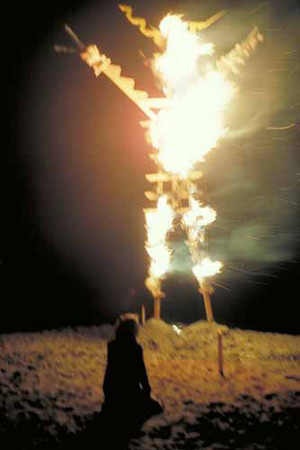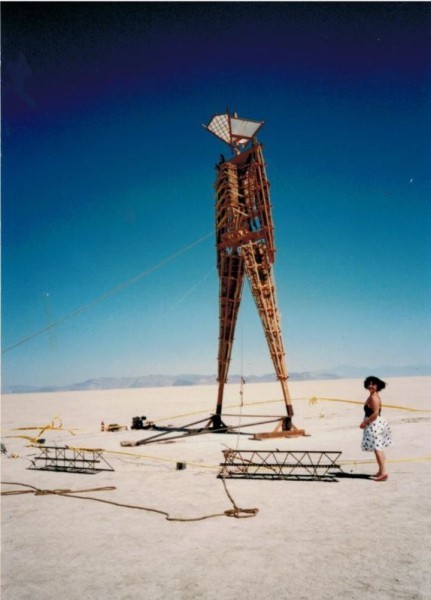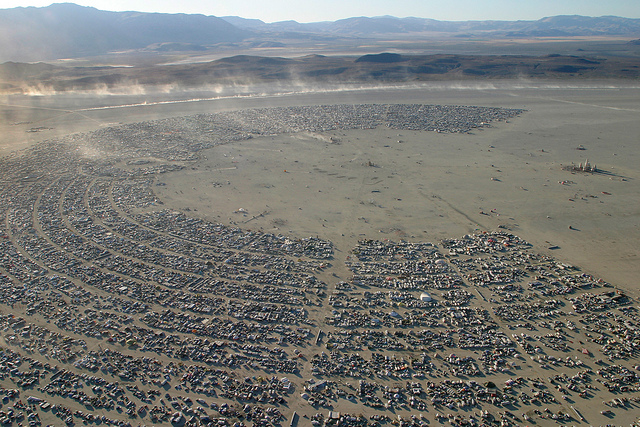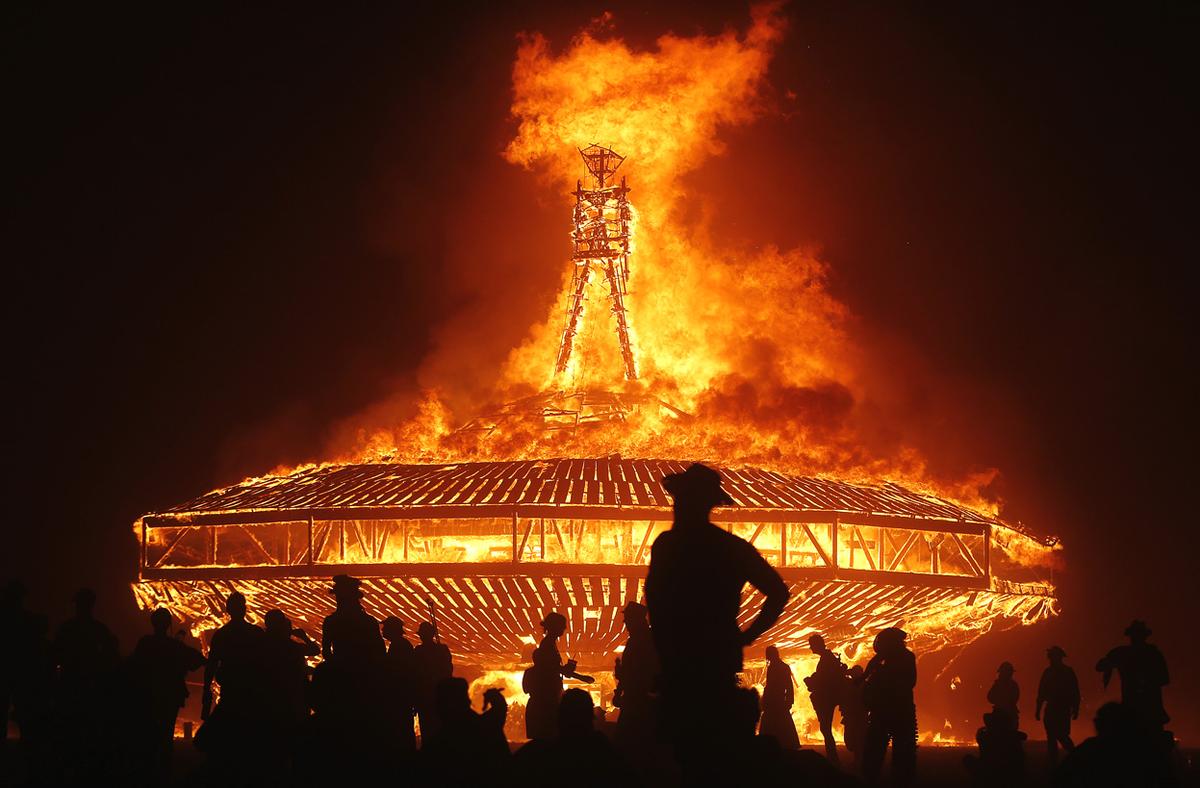Introduction
Festivals are more than a gathering of people; they are a feast of life. Similarly, an arts festival is a feast of creativity. Such festivals are held to teach, demonstrate and share knowledge about the world, cultures, and people through the prism of art. Such events allow people who are distant from the art world to feel connected to it, associate and perceive themselves through it. Participation in an art festival may change a person completely because it leaves a vivid impression that stays with them for long. This is why it is vital to research this area and be knowledgeable about it. Burning Man is one of the most well-known festivals of art and creativity in the U.S. Its huge legacy and the influence on people and their perception of art and culture make it a worthy topic to be discussed in this report.
History and Origin
The festival originates from a performance created in 1986 by two friends, Larry Harvey and Jerry James. On the summer solstice, they built a statue of a man from pieces of wood, carried it to a San Francisco beach, soaked it in gasoline, and lit it on fire (see figure 1). The performance attracted dozens of people who stood there, enchanted by the magic of flame. Suddenly, as Harvey himself noticed, some person started singing a song about fire, and everyone joined (“Man on Baker Beach,” n.d.). The two friends felt the energy that their little performance created in people around them and they decided to go further than organizing an arts event, they decided to build an artistic and cultural community.

Harvey, who tragically died this year, was an American landscape artist, a man of philanthropy and a volunteer. James was a carpenter by profession. Harvey, an ideological leader, was deeply affected by the effect that a burning effigy produced on people. It connected them in a miraculous way, bonded them together with an invisible thread. Harvey was an adopted child, so the feeling of such connectedness kindled a desire to relive the experience and share it with others (Jacques, 2014). In four years, the festival grew from 20 random people gathered on the beach to 350 people. In 1990, Burning Man festival was first organized in its usual location – the Black Rock Desert (“Man on Baker Beach & the Black Rock desert,” n.d.) (see Figure 2). With the number of the audience grew the size of the statue. The first one was only 8 feet tall while the one first burned in Black Rock Desert was already 40 feet tall. The proportions had to be increased so everyone around could see the performance. Since the festival moved to the desert, it has become something entirely different from a few people interested in watching the fire burn.

The event became survival camping where people had to collaborate in order to live through the day. The organizers believed that it cleanses the people, helps them think differently of human beings around them and the world. In addition to that, the art component of the festival became more diverse and multi-thematic. It 1992 the festival housed a fashion show, pottery exhibition and master classes, fire shows, and so forth. Notably, all of the creative activities were organized in collaboration with other campers, which portrays art as collective labor.
Presently, Burning Man includes hundreds of small art exhibitions, performances, installations, music shows, and so forth. The event grew into a massive 9-day festival with roughly 70 thousand participants living in a radial city-shaped camping place in Black Rock Desert (see Figure 3). The traditional statue of a man is now 105 feet tall (see Figure 4). Artists, professional performers, and ordinary people come together to create and participate in creation. Since the festival cannot house all people wishing to attend, Burning Man is now organized in 28 countries by volunteers and NGOs (“Marian Goodell speaks at TEDx Tokyo,” 2014). The organization that sells tickets and provides minimal utilities for living along with security, lighting, staffing, and so on has also changed from a private firm to a non-profit organization. The organizing team believes that Burning Man is not about making a profit; it is about changing people’s minds through art and collaboration (“Marian Goodell speaks at TEDx Tokyo,” 2014). The history of the festival vividly shows how positively-attuned people can change by creating and sharing thereby changing others around them in order to form a strongly-tied community with distinct but open values.


Philosophy and Values
A transformation of a person through creativity and connectivity is the key philosophical theme of the festival that runs through all 32 years of its history. According to the Burning Man festival co-founder, Larry Harvey, the organization at all its levels is built on consensus. Artists, architects, musicians, and other people on the team may agree or disagree on certain issues, but due to shared philosophy and common vision, they come to an agreement that suits the needs of the participants. Since the creative process can occasionally be difficult and multifaceted, the team postpones certain decisions until more research is presented to the table. Collaboration is another hey aspect of Burning Man. It is dynamically different from consensus, but before and during the festival it guides artists to pursue a common vision.
Essentially, as Harvey (2014) notes, the consensus is about achieving an agreement within a group, while collaboration means concentrated efforts channeled into each individual’s creativity. In Burning Man, both concepts are intertwined into a philosophy of being attentive to other person’s thoughts and feelings. Connectedness is what ‘burners’ strive towards and what they seek in coming to the festival. From connectedness, sharing and collaboration a pure art and emotion-packed performance are born transforming a person’s perception of the world in all its complexity.
Burning Man as an art and cultural movement are guided by 10 principles created by Harvey in 2004. He saw that Burning Man attracts masses of people and he felt the responsibility for them as a leader. The principles were developed in order to communicate the “community’s ethos and culture” in the form that was envisioned by its originators from the beginning (“The 10 principles of Burning Man,” n.d. para. 1). The first principle is to accept each and every person as a participant or volunteer with no regard for their the past, present, race, skin color, and so forth. Gifting is another principle that dictates an unconditional value of a gift. People on Burning Man are welcome to give gifts as it is a part of a sharing and connectivity culture.
Decommodification principle is designed to foster the culture of sharing through the organization of unique social environment free of commerce, trade, and consumerism. Radical self-reliance ushers a person to draw on his strengths and inner resource to explore and create, thus re-discovering himself or herself through the environment. Radical-self expression communicates the nature of the event by the fact that each individual or a group is welcome to present his gifts or talents to others in any form possible. However, participants are also encouraged to treasure the rights of recipients. Communal effort and civic responsibility state the collaboration with other public events, spaces, art exhibitions, and all levels of authority in order to guard public welfare and broaden the network of connections.
Participants are encouraged to leave no trace of their presence and cherish the nature of a place where Burning Man is conducted. Participation is a key principle that unites all “burners” into a creative community even between the festivals. The immediacy of experience is a value that encourages participants to contact with nature and other human beings discovering themselves here and now. All these principles define the community that gathers for the festival and form the creative environment full of self-expression in multiple forms. Art in this festival is in every “burner” and in every place within the event’s premises.
Conclusion
Burning Man is an event unique in its creative force and influence on American culture. Freedom, self-expression, creativity, sharing, collaboration, and self-reliance are the values that this festival promotes through the art of performance, installation, music, clothing, photography, craftsmanship, and many other things. The heat and light from a colossal wooden statue burning in the middle of the desert in front of thousands of people is a demonstration of how art can kindle the hearts and spirits of men and women.
References
Harvey, L. (2014). Consensus, collaboration, hierarchy, authority, and power. Web.
Jacques, A. (2014). Larry Harvey: The founder of the Burning Man festival on adoption.The Independent. Web.
Man on Baker Beach & the Black Rock desert. (n.d.) Web.
Man on Baker Beach (n.d.). Web.
Marian Goodell speaks at TEDx Tokyo. (2014). Web.
Taylor, A. (2013). Photos of Burning Man 2013. The Atlantic. Web.
The 10 principles of Burning Man. (n.d.). Web.